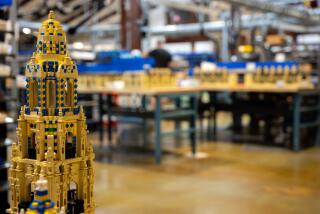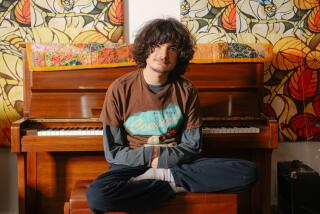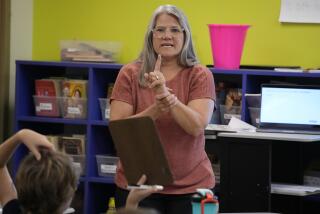The Formula for Math Mirth
- Share via
Jason Robert’s idea of a perfect day is to hunker down with a legal pad and pencil and create complex mathematical puzzles.
“It’s my passion, my love,” he said. “When I wake up in the morning, there’s nothing I’d rather do than pursue math theory.”
In August, Robert, a 17-year-old senior at El Toro High School, self-published a book of high-level math puzzles titled “The Lab Puzzle Book.” In the process, he set up a company called Labyrinth Puzzles that sells the staple-bound softcover book, and an unregistered nonprofit organization to donate copies to high schools.
Edited by a fellow El Toro student, Erik Engstrom, the book was distributed to 737 public high schools in California.
In fact, Maria Carrillo High School in Santa Rosa has made the book part of its math curriculum.
“We were looking for ways to promote kids’ interest in math and they were gracious enough to provide us with free copies of the book,” said Douglas Gray, head of the school’s math department. “We’re offering it to . . . classes as part of our instruction. They’re pretty hard puzzles.”
Robert and Engstrom, 17, were honored this fall by Peter A. Hartman, superintendent of the Saddleback Valley Unified School District, for their efforts to make math more palatable to their peers.
“Mainstream mathematics has a really bad image,” Engstrom said. “Math can be fun if presented in the right way.”
Robert and Engstrom raised more than $1,000 from local businesses to fund the printing and distribution of the book to the schools. They also sell single copies of the book for $10, although sales haven’t exactly been booming.
Robert said his nonprofit division, called Philanthropic Mathematics, is dedicated to creating mathematical problems and problem-solving techniques for high school students and encouraging “math mirth.” Basically, it does that by sending out free copies of his book to schools.
“Math is a tool to help us live a better life,” Robert said.
He disdains the pressure on high school students to memorize rote formulas out of math textbooks instead of crafting original ones.
“You’ve never done your own thinking if you’ve just solved textbook problems,” Robert said. “Then all you’re doing is feeding off the brains of Einstein and Euclid.”
Paul Kelly, guidance counselor at El Toro, predicts that someday people will be feeding off Robert’s work as an influential mathematician.
“I’ve never seen the level of math creativity that Jason has, not even close,” said Kelly. “Plus he enjoys it; he’s actually having fun.”
Robert has published puzzles in a high-IQ journal called “Oath” and has received correspondence from around the world from fellow math lovers seeking the solutions to his problems.
He lives in Lake Forest with his parents; his father owns a concrete grinding business and his mother is a receptionist at a dentist’s office. Robert hopes to attend Caltech in Pasadena and wants to be a research-based mathematician.
Kelly said that Robert isn’t a one-track nerd, armed with a pocket protector, whose only friends are numbers.
“A lot of times, kids will have the math skills without the social skills that he has,” said Kelly. “He’s smart, personable and entrepreneurial.”
(BEGIN TEXT OF INFOBOX / INFOGRAPHIC)
Puzzling Questions
“You may sit there for an hour or a day or even spend weeks doing one problem,” said Jason Robert, the El Toro High School senior who writes puzzles similar to and more challenging than the ones below. Robert’s self-published book of high-level puzzles has been distrbuted to 737public high schools in California.
What’s the number of cubes that can be formed by a four-by-four-by-four cube?
What’s the number of triangles that can be formed from a flat triangle with a base of four?
1: 100 cubes can be formed. There are 64 one-by-one cubes, 27 two-by-two-by-two cubes, 8 three-by-three-by- three cubes and 1 four-by-four-by-four cube.
2: 27 triangles can be formed. 16 one-by-one, 7 two-by-two, 3 three-by-three, 1 four-by-four.
SOURCE: THE LAB PUZZLE BOOK BY JASON ROBERT
More to Read
Sign up for our Book Club newsletter
Get the latest news, events and more from the Los Angeles Times Book Club, and help us get L.A. reading and talking.
You may occasionally receive promotional content from the Los Angeles Times.










